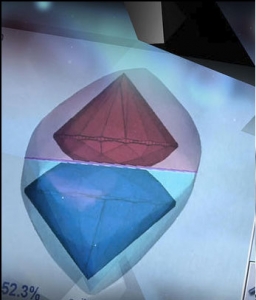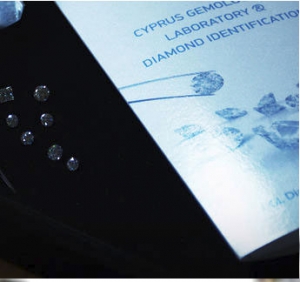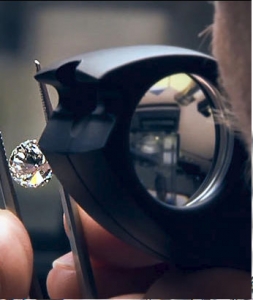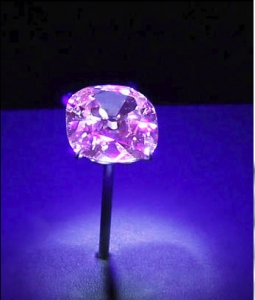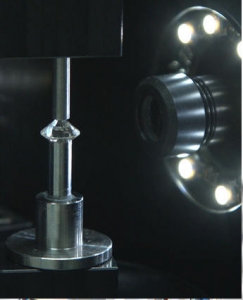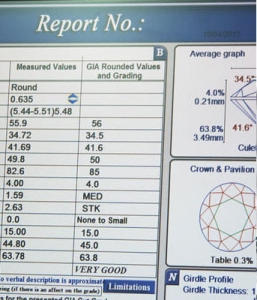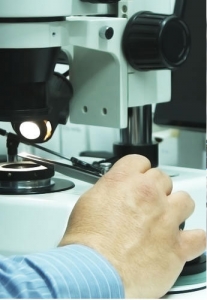Welcome
The diamond industry is a global business with significant influence on the global economy.
The great development of the industry in the recent decades has brought with it the development of gemological laboratories, aimed on the evaluation and certification of diamonds, using a highly developed technology.
The Cyprus Gemological Laboratory / CGL is one of the most modern international gemological laboratories, providing high quality and absolute accuracy services in the diamond and gemstone market of the southeastern Mediterranean.
Committed to the international rules, the CGL issues evaluation confirmations and certificates only for natural and not for artificial diamonds.
A confirmation or a certificate issued by the Cyprus Gemological Laboratory
is an internationally recognized guarantee document, due to the scientific knowledge, the top-of-the-line equipment and the high quality professional training of the specialized personnel.
The Cyprus Gemological Laboratory provides a full range of identification, evaluation and certification of diamonds.
The close cooperation between the Cyprus Gemological Laboratory and the International Gemological Society IGS as well as other top international laboratories, the experience, the global appreciation earned, and the unique technical equipment, established the CGL as a major regional gemological laboratory, with significant contribution to the growth and development of diamonds market.
CGL- Cyprus Gemological Laboratory.
About Us
A bit more about us
The Cyprus Gemological Laboratory – CGL- is the member of a global family of modern gemological laboratories, playing an important role in the international and regional market of diamonds and gemstones.
It is significantly important for everybody to know the quality, the characteristics and the real value of a diamond or other precious stone he owns, by having an internationally recognized certificate.
The Cyprus Gemological Laboratory has the right equipment, the expertise and the experience to provide accurate and certified information on every diamond and gemstone ensuring and enhancing thereby its purchasing and commercial value.
The guarantee of providing high quality services by CGL is also signed by the multidisciplinary knowledge of its expert scientists and the continuous cooperation of the CGL with the biggest gemological laboratories around the world.
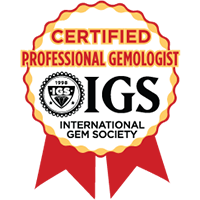
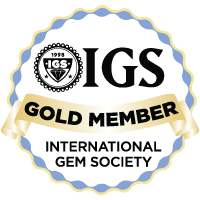
Services
Evaluation of a diamond cut and symmetry with the modern “Unoscope HD ” electronic systems.
High Resolution Diamond Grading System:
The UNOScope system is an advanced Diamond Grading system based on HD digital camera and High speed calculation capacity. This machine is designed for superior grading of a diamond’s proportion, symmetry and extra facets, in minimum time.
The UNOScope system uses software to measure round and several fantasy diamonds according to standards of various laboratories such as GIA FACETWARE. It then produces a variety of reports comprising the most accurate information about the diamond. Such information includes: weight, diameter, depth, crown angle and height, pavilion angle and height, culet and more.
Issuance of an internationally recognized certificate, stating the characteristics and the value of a precious stone. The certificate is saved electronically in the database of the laboratory and is always in the owner’s disposal.
The close relationship of the Laboratory with other major laboratories around the world, the knowledge, the experience and the leading technological equipment enforce the value and the status of every certificate, issued by the Cyprus Gemological Laboratory.
Recognition and classification of natural diamonds, synthetic and imitation stones. Identification of a diamond’s origin with latest generation Raman Spectrometers.
The Raman spectrometer is a monochromatic visible laser.The Scattered radiation can be analyzed by using scanning optical monochromator with a phototube as a detector. A laser beam is used to irradiate a spot on the sample under investigation. The scattered radiation produced by the Raman Effect contains information about the energies of molecular vibrations and rotations and these depend on the particular atoms or ions thatcomprise the molecule; the chemical bonds that connect them, the symmetry of their molecule structure and the physio-chemical environment where they reside.The Raman spectrometer measures the wavelength and intensity of inelastically scattered light from molecules. It is used to determine the chemical composition of a sample based on the wavelength and intensity of the light passing through the sample.
Radiation Measurement of the diamond using ultraviolet
Fluorescence UV / LW-SW Diamond Chamber
The Fluorescence is a characteristic that makes some diamonds appear to change color when they are exposed to the ultraviolet light that surrounds us every day in sunlight and in the light produced by fluorescent light bulbs. The Diamond Fluorescence refers to how a diamond responds when subjected to ultra-violet light. Some diamonds, when they are exposed to UV light, glow different colors.
CGL grades Fluorescence with 5 different ratings:
None
Faint
Medium
Strong
Very Strong
Code inscription on the diamond surface using laser for identification of the diamond with its certificate.
GEMScribe Diamond Girdle Laser Inscription:
GEMScribe is an automatic diamond laser inscription system which allows you to inscribe on the stone’s girdle for any conceived purpose, from branded inscription to personal dedications.
GEMScribe Diamond Inscription Application:
Brand your company logo.
Protect your diamond by inscribing a unique serial number.
Inscribe your customer’s personal message on the girdle of the diamond.
Inscribe even when the stone is already set on a ring.
Classification of diamond to I a and II a groups using Diamond Spotters and Diamond Illuminators for precise separation of the diamonds of the two groups.
Group A: type IaA, IaAB and Ib
Such colorless diamonds have not been decolorized by a HPHT treatment.
Group B: type IIa, IIb and rare IaB
Such diamonds may have been treated by a HPHT treatment.
If a diamond results in a type Ia no further investigation is done. If a diamond is type IIa then investigation for treatment HPHT takes place.
The diamond spotter initially has been developed as a reaction to the threat of the HPHT treated diamonds. You may test all diamonds with the diamond spotter. Be it colorless or colored, cut or rough crystal, loose or mounted. Even diamonds which are larger than the sample holder of the spotter may be tested.
Type II diamonds are found as colorless (type IIa), pink (IIa), blue (IIb) or brown (IIa and IIb) stones. Colorless, pink or blue stones may be naturally colored or the result of a High Pressure High Temperature treatment (HPHT).
Clarity measurement and color identification of the diamond with stereoscope equipped with Camera Discovery C30 “and “Diamond Master Sets “.
The Diamond color is one of four major characteristics that are considered when determining a diamond’s quality and value. They are known as the Four Cs, and the remaining three are diamond clarity, diamond cut, and diamond carat weight. Understanding these four characteristics, and how they interact, will help you choose a diamond that suits your tastes and your pocketbook. To be graded, diamonds must be loose, because once a diamond is set into metal the metal can affect the color we perceive.
Diamond Color Grades
Colorless diamonds and diamonds that are yellow or yellowish brown are grouped into the categories shown below. These grades do not apply to fancy colored diamonds – they have their own color grading standards.
D-E-F
Colorless
G-H-I-J
Nearly colorless
K-L-M
Faintly tinted, usually yellow.
N-O-P-Q-R
Lightly tinted, usually yellow. Tint can be seen with the naked eye.
S-T-U-V-W-X-Y-Z
Tinted, usually yellow diamonds, may progress to brownish.
Tint is visible to the naked eye, even when mounted.

